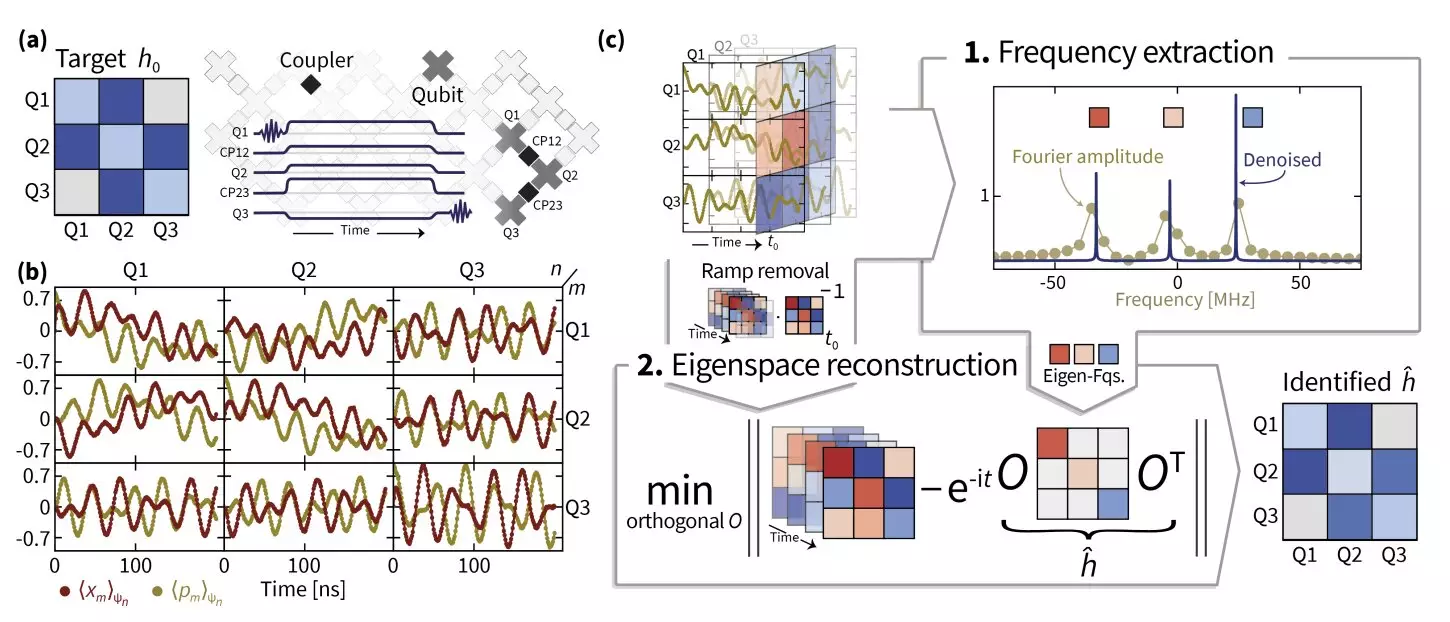In recent years, the burgeoning field of quantum computing has prompted extensive research into the dynamics governing quantum systems. Among this research, a significant contribution has come from an interdisciplinary collaboration involving experts from Freie Universität Berlin, the University of Maryland, Google’s AI team, the National Institute of Standards and Technology (NIST), and Abu Dhabi’s research community. Their objective? To develop robust methodologies for estimating the parameters of free Hamiltonians that describe bosonic excitations in superconducting quantum simulators. Published merely on arXiv, their findings hold the potential to revolutionize quantum simulations, pushing boundaries beyond what classical computers can achieve.
Jens Eisert, the lead researcher behind this endeavor, describes his motivation stemming from a unique incident at a conference in Brazil. Upon receiving a call from colleagues associated with Google’s AI initiatives, he was confronted with the challenges they faced in calibrating their advanced superconducting quantum chip using Hamiltonian learning methods. What seemed like a straightforward challenge quickly morphed into a complex puzzle, highlighting the intricacies involved in accurately estimating Hamiltonian parameters crucial for quantum system characterization.
Initially, Eisert assumed that the problem was of a simpler nature. However, as discussions progressed, it became clear that the Hamiltonian frequencies in the superconducting chip system could not be reliably deduced from the data available. In light of this daunting realization, Eisert decided to bring in two talented Ph.D. students, Ingo Roth and Dominik Hangleiter, to collaborate on resolving the issue. Their journey underscored a significant learning curve, demonstrating how the intersection of theoretical and experimental physics often breeds unexpected intricacies.
The breakthrough came after years of persistent effort and the addition of a new team member, Jonas Fuksa. Together, the team utilized concepts derived from superresolution techniques—a methodology commonly employed for enhancing the precision of eigenvalue estimation. Their innovative approach faced many hurdles; yet, thanks to a collaborative spirit and dedication from experimental lead Pedram Roushan of Google AI, the research team eventually triumphed in their quest.
Central to their research was a dual-approach methodology that combined superresolution techniques with manifold optimization. Superresolution redefined the possibilities for eigenvalue estimation, allowing researchers to pinpoint Hamiltonian frequencies accurately. On the other hand, manifold optimization employed specialized algorithms designed to navigate complex mathematical challenges where parameters reside on curved spaces rather than conventional Euclidean frameworks.
Eisert and his team emphasized the necessity of understanding Hamiltonian switching processes—elements that often lead to non-unitary dynamics. This attention to detail proved critical, as attempting to fit Hamiltonian evolutions amidst imperfect transitions could result in significant inaccuracies. The culmination of their efforts led to the creation of a novel signal processing method termed TensorEsprit, which afforded them the robustness required for measuring Hamiltonian parameters across a network of up to 14 superconducting qubits distributed between two processors.
The initial results from Eisert’s research suggest promising scalability and applicability of their methodologies to more extensive quantum processors. Furthermore, their approach could inspire subsequent studies focused on the characteristics of Hamiltonian parameters in quantum systems, thereby laying the groundwork for a series of advancements in quantum technology.
Looking ahead, Eisert and his colleagues plan to explore their methods in the context of interacting quantum systems and extend their applications to cold atom quantum systems, which were pioneered by physicist Immanuel Bloch. This commitment to interdisciplinary inquiry signals a proactive stance in advancing the understanding of Hamiltonian frameworks, which are often taken for granted yet underpin the predictive capabilities of quantum experiments.
A crucial takeaway from this research is the conceptual clarity it brings to the notion of Hamiltonians in quantum mechanics. The Hamiltonian serves not just as a mathematical construct, but a centralized figure governing the behavior of a system. Researchers often overlook the true complexity of defining these operators, assuming their characteristics are inherently known. Eisert’s exploration provides a compelling reminder that, without an accurate understanding of the Hamiltonian, predictive power in quantum mechanics remains severely limited.
As the landscape of quantum technology evolves, the work undertaken by Eisert and his collaborators will undoubtedly serve as a cornerstone for future investigations into quantum simulations. They are not merely enhancing theoretical frameworks; they are paving the way for practical applications that promise to redefine our interaction with quantum mechanics, ushering in a new era of high-precision simulations and ultimately enriching our understanding of complex quantum systems.


Leave a Reply